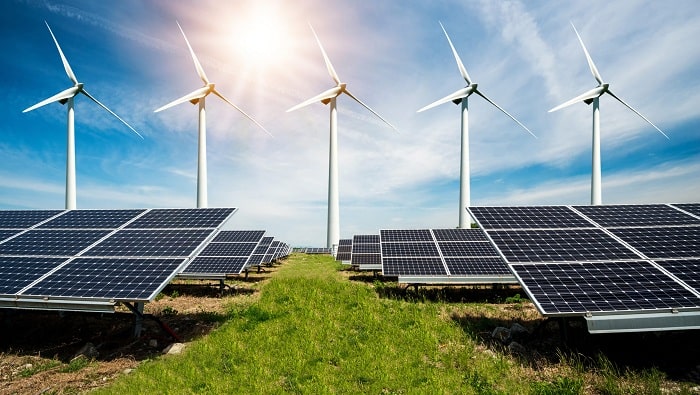The Ministry of New and Renewable Energy (MNRE) has issued a detailed proposal for developing wind parks and wind-solar hybrid parks. The stakeholders can submit their suggestions and comments by November 28, 2020.
According to the ministry’s proposal, the probable sites for wind and wind-solar hybrid projects have been identified with the help of the National Institute of Wind Energy (NIWE).
If the site is suitable for solar projects, the park developer may consider developing a wind-solar hybrid park. The identified areas would be made available to the state governments for their consent on the park’s development.
As per the ministry document, wind potential areas with more than 30% capacity utilization factor (CUF) will be considered. Each park’s capacity should be 500 MW or more; however, parks of lower capacity may also be developed depending on land and resource availability.
The state government will play its role in selecting park developers and helping them acquire the identified sites. In case the power generated from the park is exported to other states, the state government will be entitled to a facilitation charge of ?0.05 (~$0.0007)/kWh of electricity exported to other states by the project developer.
The ministry further noted that the park developer would be the implementing agency for developing the park. The park developer can be any implementing agency of the state government, any central government agency, joint venture or special purpose vehicle (SPV), or a private developer.
The park developer will be responsible for developing the detailed project report (DPR), acquire land for the project, obtain statutory and non-statutory clearances, and obtain permission from the central transmission utility (CTU) or state transmission utility (STU).
The ministry will provide central financial assistance at the rate of ?2.5 million (~$33,499)/park to the developer for DPR preparation and CFA at the rate of ?2 million (~$26,799)/MW or 30% of the park development cost, whichever is lower.
The park developer will recover the project cost, maintenance cost, and profit margin through CFA, one-time registration charges, and per unit generation charges from the project developer.
In case the designated park developer is a central or state government agency, then the park development cost will be recovered in the following ways:
The park developer can charge the remaining park development cost from the project developer as registration charges on a pro-rata basis (?/MW). Further, the park developer can charge maintenance cost and profit margin through a fixed per unit charge on electricity sale.
The park developer can charge a portion of the remaining park development cost (not less than 30% of total project cost) from the developer as registration charges (?/MW) basis.
In case the designated park developer is a private developer, the park developer may charge the remaining park development cost from the project developer as registration charges on a pro-rata basis (?/MW).
The project developer installing wind or wind-solar hybrid power project may enter into a power purchase agreement with DISCOMs or intermediary procurer or bulk consumer.
The park developer will set up one or more pooling stations inside the park and draw transmission lines to transmit power to the nearest substation of CTU or STU, as the case may be.
Recently, the MNRE issued tariff-based competitive bidding guidelines for power procurement from grid-connected solar-wind hybrid projects. The objective is to provide a framework for procuring electricity from the interstate transmission system connected wind-solar hybrid power projects through the competitive bidding route.
Previously, it was reported that MNRE had announced the wind-solar hybrid policy that aims to provide a framework for expanding grid-connected wind-solar hybrid systems in the country.





































